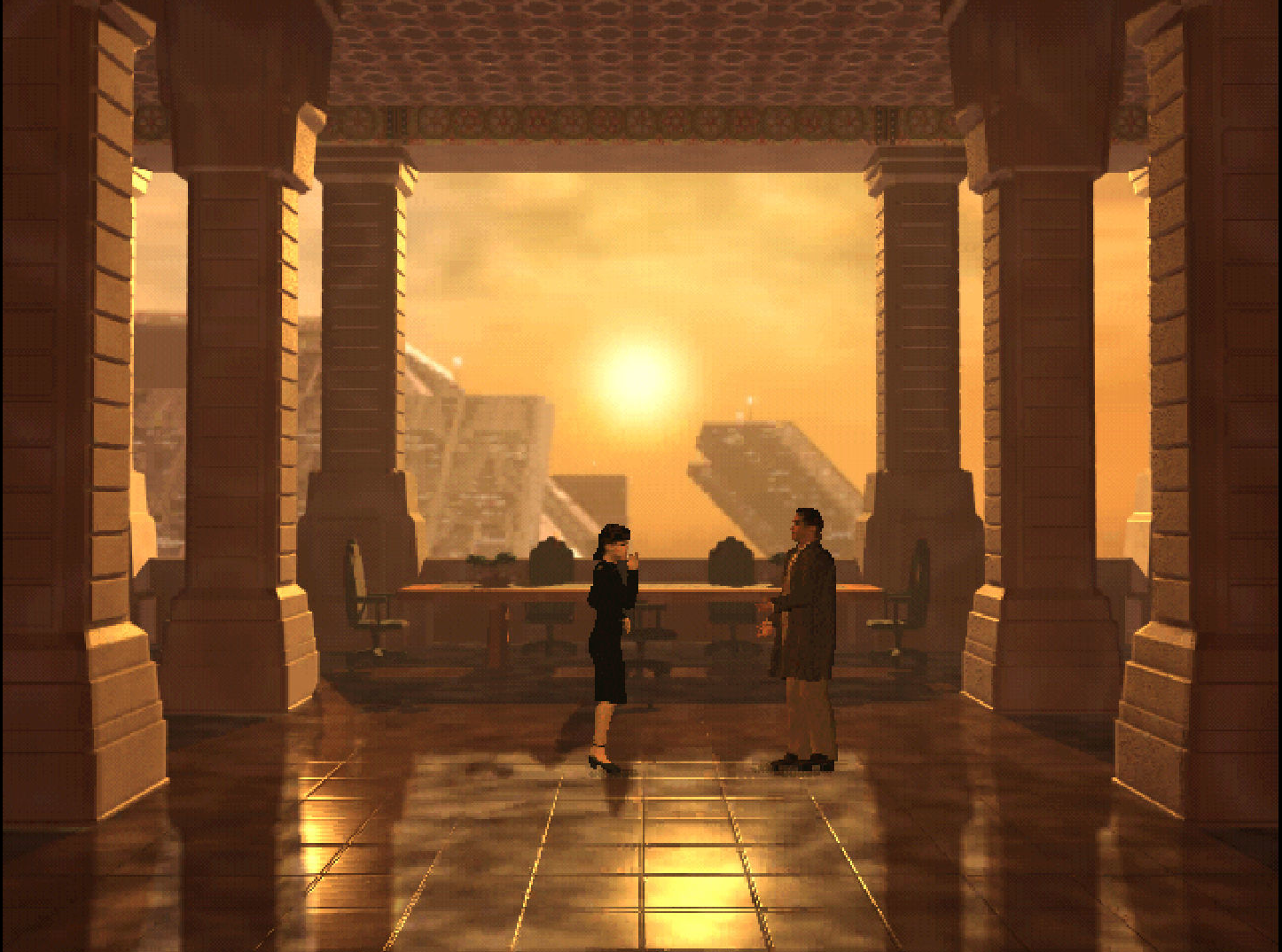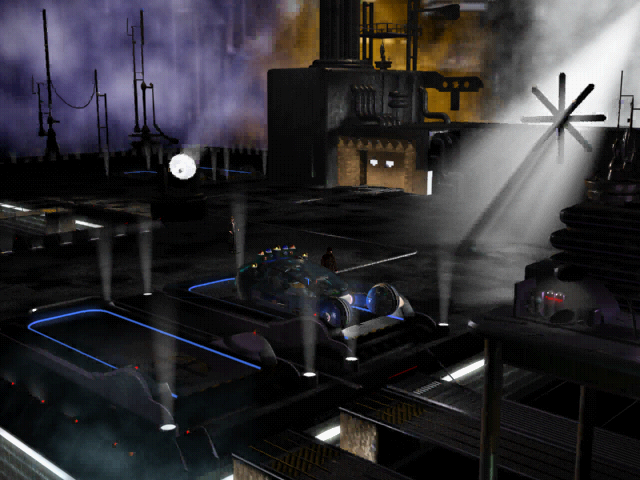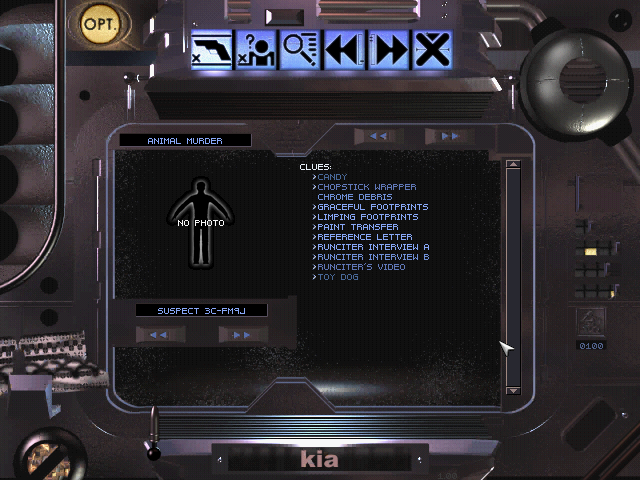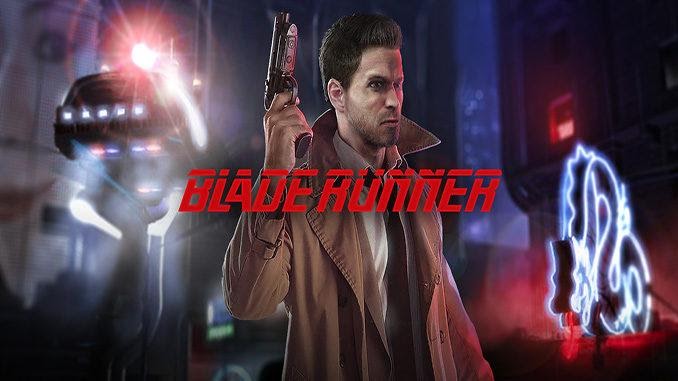| Previous
Page |
PCLinuxOS
Magazine |
PCLinuxOS |
Article List |
Disclaimer |
Next Page |
Finally! Blade Runner On PCLinuxOS! |
|
by Alessandro Ebersol (Agent Smith)
In 1982, visionary director Ridley Scott (Alien, Gladiator) created a masterpiece, so far ahead of its time, that it was not appreciated right away at its launch. Blade Runner was released in 1,290 theaters on June 25, 1982. That date was chosen by producer Alan Ladd Jr. because his previous highest grossing films (Star Wars and Alien) had a similar opening date (May 25) in 1977 and 1979, making the 25th of the month his "lucky day". Blade Runner grossed reasonably well at the box office over the opening weekend; earning $ 6.1 million during its first weekend in theaters. The film was released alongside other major sci-fi and fantasy releases, such as The Thing, Star Trek II: The Wrath of Khan, Conan the Barbarian and ET the Extraterrestrial. It was nothing short of a big dog fight. The film made $ 26 million in its season in the summer of 1982 - not bad, but not enough to make it into the summer's top 10. And it certainly wasn't enough to make a profit (the summer box office was dominated by two films, "ET - the Extraterrestrial" and "Rocky 3"). Against a budget of $ 28 million, it was a moderate flop. Of course, after Star Wars, audiences expected easier science fiction, a simpler struggle between good and evil, and not the metaphysical questions the film raised. It had action, no doubt, but it was very cerebral. And, dark. A decadent and hopeless future. Time passed, and, Blade Runner became a cult classic One of the first examples to prove the power of home video, after gaining an international audience of followers, finally found its audience on VHS and DVD. Since then, it has been celebrated as one of the greatest science fiction films of all time. Thanks to the VHS/DVD exhibition, the film had several versions, re-releases, a definitive director version, and a sequel in 2017. But, why did I mention the film Blade Runner? The Blade Runner game was recently re-released, and it works perfectly on current operating systems and current computers.  Blade Runner would only be a hit years after its release The game, like the movie, was beyond its time We arrived at the Blade Runner game, created by Westwood studios, and distributed by Virgin Interactive, which was in a long period of development, partly because of Blade Runner's IP proprietary rights, and, for several technical aspects. Generally movie-based games are a disappointment, but this game in particular is not. On the contrary, Blade Runner, the game, is a unique piece. The Development The initial idea for a Blade Runner video game adaptation came from The Blade Runner Partnership (composed of Bud Yorkin and Jerry Perenchio of Tandem Productions). They originally approached Electronic Arts, Sierra and Activision, before Virgin Interactive agreed to move the project forward. However, the rights of the film were distributed to several entities, each with a different aspect, making the production of the game complex from a copyright perspective. The Ladd Company had US distribution rights for the film, Run Run Shaw had international distribution rights, and The Blade Runner Partnership had all ancillary rights, and were the guarantors of the title. They had taken control of the film when it exceeded its budget and schedule at the end of production. As a result, the separation of rights took several years before Virgin was in a position to actually start development. They finally hired Westwood Studios to work on the game, but even with the rights guaranteed and the game in pre-production, there were still legal issues. To circumvent legal problems, the game's creative team, led by Louis Castle (co-founder of Westwood studios and creative director of Blade Runner), decided to create not a story true to the film, but a story in the film universe, a side-story, so to speak. And, due to several problems, in the production of the film, key people in the making of the film, did not want to participate in the game. Ridley Scott, the director, did not want to have any involvement with the game, nor did Harrison Ford, who at the time (1997) was very upset with the whole production (the production of the 82 film was very tumultuous). So how would the team create the world of Blade Runner, the game? With the assistance of the film's concept art staff, Syd Mead, and production designer Lawrence G. Paull and art director David Snyder. So, with the help of this team, Louis Castle ordered his team that everything created for the game should come from the art of Syd Mead and the designs of Paull and Snyder. The inventive story of Blade Runner, the game. As stated above, Louis Castle did not want to adapt the film directly. One reason was the difficulty with copyrights. One company owned the rights to the music, another the rights to worldwide distribution, another to the rights to the film in the United States, and so on. Thus, another original story was created, within the Blade Runner universe. In this story, the player would not play Rick Deckard (Ford), but another Blade Runner, newcomer Ray McCoy. And, the story would follow Deckard's footsteps, and, it would take place in several well-known Los Angeles 2019 scenarios: The Bradbury building, the pyramids of the Tyrell corporation, Howie Lee street restaurant in Chinatown, the cylindrical police building of Los Angeles, Ray's apartment, among other locations. The story greatly expands the Blade Runner myths, with Ray visiting other places, not shown in the film (the LA police station is an example).  Howie Lee's restaurant, Chinatown As the story is collateral to that of the film, there are several mentions and occasions where the player occasionally hears about Deckard, but never finds him. For example, when visiting the Tyrell building, Rachael mentions that she has already spoken to another Blade Runner. Another example is a photograph taken on Animoid Row, which shows Deckard in the background, and prompts McCoy to exclaim "He looks familiar." The Plot The game begins right after the movie opens, with Deckard already assigned to track Roy Batty and the other replicants, McCoy (the player) is tasked with tracking down a group of replicants who are suspected of killing animals -- a crime as hideous as killing humans, since most animal species are extinct and real specimens are extremely rare. As McCoy's investigation progresses, he is accused of murdering a civilian by the corrupt lieutenant Guzza, who has been helping the replicants in an effort to prevent them from revealing his activities. Forced into hiding, McCoy explores the bowels of Los Angeles and makes contact with replicant twins Luther and Lance, former genetic designers at Tyrell Corporation who are now working to extend their own lives and those of all other replicants. From them, McCoy receives a detailed report containing evidence of Guzza's corruption. Using this information, he blackmails Guzza and forces him to correct the falsified evidence on him (McCoy) and clean his name. They meet in the city's sewers for an exchange, where Guzza is wounded by gunfire from replicants. At this point, the player can flee or kill Guzza. The game features thirteen different endings, which are influenced by the player's cumulative actions and decisions throughout the story.  Ray interrogates Rachel The designers wanted the game to feature a lot of random elements, with the idea that no two matches are the same, and no walkthrough would be able to cover all possible eventualities or all possible combinations of random events. The game presents the player with fifteen suspects, but only two are always replicants (Clovis and a cook named Zuben). Which of the other thirteen characters is a replicant is randomized every time the player plays the game, and their behavior is different with each new game, based on whether or not they are human. Due to the random nature of the game, the script increased to 500 pages, and beta testers had to play the game 2,500 times to experience all possible variations. Due to the importance of plot randomness, the NPC's behavior was not scripted. Instead, each NPC is given certain goals to be met, based on whether they are replicant or human. The way in which they fulfill these objectives is handled by the AI system and can change from game to game, as most objectives have several possible methods of achievement. The developers compared this aspect of the game to simulation games, like SimCity, instead of traditional adventure games like Myst. Castle explains: "These agents are real, goal-oriented artificial intelligences. We don't know exactly what they will do. We gave them behavior, we didn't give instructions. There's a big difference between behavior-based AI and script-based instructions." The Graphics The design of the Blade Runner game was extremely ambitious for the time. In contrast to many contemporary games, the game engine included pre-rendered backgrounds and 3D characters, but did not require the use of any 3D hardware accelerator. Designers David Leary and James Walls achieved this through self-developed technology using voxels (pixels with width, height and depth). Castle explains: "We had to invent a new technology for the characters. We went back to voxel technology and used it as a launch pad. What we are using are not voxels, but a kind of 'voxels plus'. We use voxels to make rotations, transformations and three-dimensional projections that create the character, but in fact we use a very fast polygon rendering engine to render the polygons on the screen. Because we do not need a voxel model that is so dense that every pixel is a voxel, we are able to achieve much higher frame rates with many more polygons on the screen and with many characters." "When we told Intel that we were making a 640x480 game, 65,000 colors that emulates true colors, with 16-bit Z-buffer and six-channel CD-quality audio, they said: You can't - the PCI bus doesn't support it. "So we feel good about ourselves, because we haven't mentioned the 750,000 polygons for the characters yet", Castle said, with a smirk. Graphically, the game resembles some games of the time, with pre-rendered 3D scenarios, and 3D characters, in this case, with the voxel-plus technique. It's something similar to franchises like Alone in the Dark and Resident Evil. However, in a totally different and exciting way, the scenarios have lighting, and even though they are pre-rendered images, they are animated: fans that roll (and the game has many), and the lights change, blink. There are NPCs walking and spinners in the skies. The rain constantly falls, and it makes puddles on the ground.  Fans rolling and fog, always The characters, built with voxel-plus, are illuminated with the light of the environment in which they are, giving an air of impressive realism to a game made in 1997. As if it had dynamic lighting, something that would only be commonplace many years later. The game environment spends 60 to 65% of the CPU bandwidth, mainly because of the moving camera, but also because eight different characters can appear on the screen at any time - a large number for the technology of the time. Because of this, a powerful CPU was needed to run the game, as the engine had the processor doing all the work in creating the 3D models. However, despite this limitation, the game runs at a minimum of 15 FPS, even on slow systems. The disadvantage of this was that, since the power of processors at that time was limited, the 3D models in the game tended to appear very pixelated, especially up close and without movement, due to the low amount of voxels used to display them. However, if the number of voxels increased to increase the details of the characters, the game would be too slow to play, even on advanced CPUs. All animations of the game's characters are based on actors with motion capture, with the characters moving in the pre-rendered 3D environment. At the time, any game that attempted 1,000 sequences captured per move was considered cutting edge; Blade Runner had 20,000. The Music The rights to the film's original soundtrack could not be guaranteed for the game, so Westwood brought in its composer, Frank Klepacki, to create tracks based on Vangelis' score and also to re-record some of the film's main tracks. Since Klepacki did not have access to the original master recordings, he had to recreate the music by ear. The Cast The cast has some actors replaying their roles in the film, such as Sean Young, Joe Turkel, James Hong and Brion James. And, promising young actors (at the time), like Lisa Edelstein (from the House series), as the partner of Detective McCoy, Crystal Steele, or a young Pauley Perrette (NCIS), as one of the protagonists, and, the late Vincent Schiavelli plays an arms dealer. With a cast of more than 60 actors, the result is impressive. The variety of voices really gives the feeling of being in a big city. The full list can be seen here.  Lisa Edelstein as Crystal Steele My Review I managed to play it, after 23 years, with the re-release made by GOG (which I will talk about later), and I was amazed. The game is a technical marvel, which, even made so long ago, still impresses. It is a point & click adventure, like so many that exist, however, it is so unique, that there is no other game like it. It resembles Star Trek, 25th anniversary, not only for the quality of the production, but the immersiveness, the graphics, the audio, everything, transports the player to the universe of Blade Runner, to that Los Angeles of 2019, always rainy and immersed in fog. The immersion is total, and fantastic. The audio is environmental, that is, according to the player's position on the screen, certain sounds will be heard, and, moving away from those sounds, they will diminish or disappear. The interface is very simple, just the mouse, a pointer, which changes color, when passing objects on the screen where the player can interact. The player has a PDA, KIA (Knowledge Integrated Assistant), which keeps the clues that the player finds to solve the crime. These clues must be downloaded to the mainframe of the Los Angeles police station, and the mainframe will process them and respond with other clues for the player to investigate.  KIA, McCoy's PDA During the game, the player must use the ESPER machine to analyze crime scenes, photographs and videos, looking for suspects and clues. The player will also use the standard Blade Runner pistol, the blaster, as there will be situations in which it will be necessary to defend Ray McCoy's life. However, be careful when using it: If you "retire" a human being, it's game over. Eliminate replicants, fine. Human beings, it's game over. My Verdict: Buy it now! Don't think twice. It is a classic, which now works perfectly on current computers and PCLinuxOS. But ... How did Blade Runner get to us? After 23 years? The Re-release Speaking in 2015 about a possible re-release of the game via Steam or GOG.com, Louis Castle explained that the source code and assets were lost when Westwood moved its studio from Las Vegas to Los Angeles, making a relaunch or an HD remaster impossible. Even if the code were found, restoring almost a terabyte of assets, whether for new pre-rendered or 3D real-time scenarios, would cost tens of millions of dollars, making the relaunch as unlikely as a sequel. The Blade Runner partnership and Electronic Arts held the rights to the game for many years at this point. However, the game would finally arrive on GOG.com on December 17, 2019, following an agreement with Alcon Interactive Group and the website, using ScummVM: Several attempts have been made to reverse engineer the game's engine. As it is technically complex with voxel graphics for game actors, video backgrounds and random paths, the final project took eight years to complete. The new Blade Runner engine was added to the ScummVM game engine collection on October 13, 2016 and took another three years to be ready for public testing on June 16, 2019 and included in ScummVM version 2.1.0.I would advise you to use the Windows version, with PlayOnLinux, create a prefix, install GOG Blade Runner on it, and set it up as Windows 7, install Directx9C and you are done. I believe when this issue is ironed out, we'll be able to play it natively on PCLinuxOS's ScummVM.
URL: https://www.gog.com/game/blade_runner Enjoy! And, good hunting, Blade Runner! |

